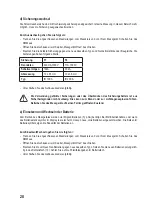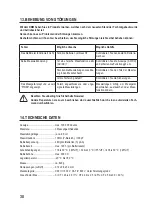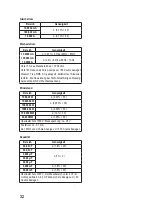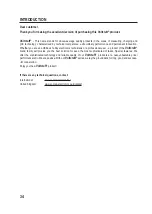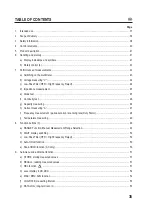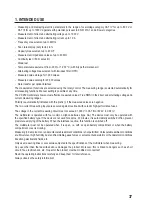
39
CAT II
Overvoltage category II for measurements on electric and electronic devices connected to the mains sup-
ply with a mains plug. This category also covers all lower categories (e.g. CAT I for measuring signal and
control voltages).
CAT III
Overvoltage category III for measuring in building installation (e.g. outlets or sub-distribution). This category
also covers all lower categories (e.g. CAT II for measuring electronic devices).
CAT IV Overvoltage category IV for measuring at the source of the low-voltage installation (e.g. main distribution,
house-transfer points of energy providers, etc.). This category also contains all lower categories.
Earth potential
For safety and licensing reasons, unauthorised conversion and/or modification of the device is not permitted.
Consult an expert when in doubt as to the operation, the safety or the connection of the device.
Meters and accessories are not toys and have no place in the hands of children!
On industrial sites, the accident prevention regulations of the association of the industrial workers’ societies for electri-
cal equipment and utilities must be followed.
In schools, training centres, hobby and self-help workshops, handling of meters must be responsibly supervised by
trained personnel.
Ensure before every voltage measurement that the meter is not set to a measuring range for current.
The voltage between the connection points of the meter and the earth potential must not exceed 1,000 V (DC/AC) in
CAT III or 600 V in CAT IV.
The measuring prods have to be removed from the measured object every time the measuring range is changed.
Be especially careful when dealing with voltages higher than 25 V alternating (AC) or 35 V direct voltage (DC)! Even
at these voltages it is possible to receive a potentially fatal electric shock if you touch electrical conductors.
Check the meter and its measuring lines for damage before each measurement.
Never carry out any measurements if the protecting insulation is defective (torn, ripped off etc.).
To avoid electric shock, make sure not to touch the connections/measuring points to be measured directly or indirectly
during measurement.
Never reach beyond the noticeable grip area marks at the measuring prods during measurements.
Do not use the multimeter just before, during or just after a thunderstorm (lightning! / high-energy overvoltage!). Make
sure that your hands, shoes, clothing, the floor, circuits and circuit components are dry.
Never operate the product in direct proximity of:
- strong magnetic or electromagnetic fields
- transmitter aerials or HF generators.
This could affect the measurement.
If you have reason to believe that the device can no longer be operated safely, disconnect it immediately and make
sure it is not unintentionally operated. It can be assumed that safe operation is no longer possible if:
- the device shows any visible damage,
- the device no longer works and
- the device was stored under unfavourable conditions for an extended period of time or
- after it was exposed to extraordinary stress caused by transport.
Do not switch the meter on immediately after it was taken from a cold to a warm environment. The condensation that
forms might destroy your device.




